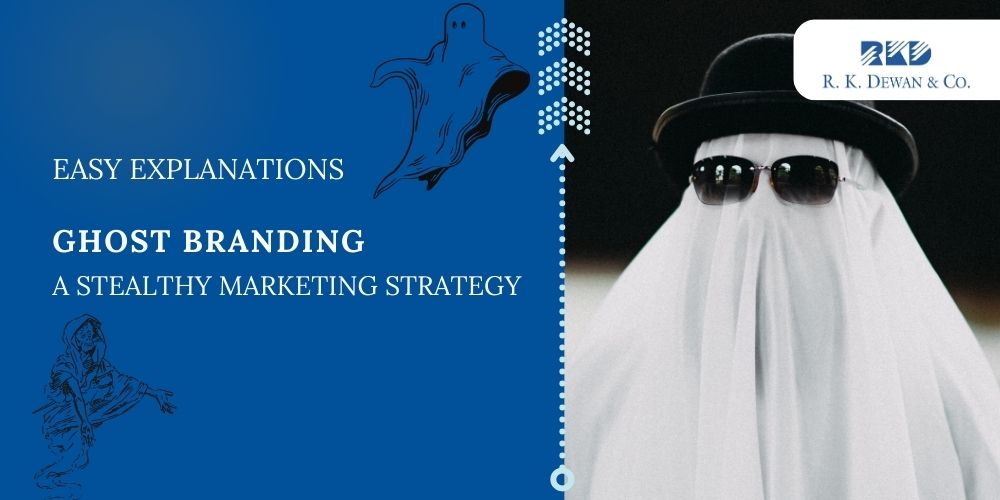What is Ghost Branding?
Ghost branding is a marketing strategy that involves creating a brand identity without directly revealing the identity of the person or organization behind the campaign. This approach involves creating content and engaging on social media, but without disclosing the source. The goal of ghost branding is to create a sense of authenticity and community around a brand, product, or service, without the public knowing that the content is being created and promoted by a third party.
Ghost branding is called as such because it is a marketing strategy that involves creating a brand identity without directly revealing the identity of the person or organization behind the campaign. The brand is “ghosted” or hidden from view, and the focus is on creating a sense of authenticity and community around the brand, product, or service.
The term “ghost” refers to the fact that the brand is not directly visible or acknowledged, but its presence is felt through the content, messages, and interactions that are created. It’s like a ghostly presence that is felt, but not seen.
In ghost branding, the brand is not directly promoted or advertised, but rather, the focus is on creating a sense of connection and engagement with the target audience. The brand is hidden behind a veil of authenticity and community, and the audience is not directly aware of the brand’s involvement.
Ghost branding is often used in digital marketing, where the brand is not directly visible, but its presence is felt through social media, content marketing, and influencer marketing. It’s a strategy that is used to build brand awareness, engagement, and loyalty, without directly promoting the brand.
Key Characteristics of Ghost Branding
- Indirect Promotion: The brand may not be overtly promoted in the content, allowing the message to feel more organic and less like traditional advertising.
- User-Generated Content: Encouraging customers or influencers to create content related to the brand can amplify reach without the brand’s direct involvement.
- Viral Potential: By crafting shareable content, brands can tap into the viral nature of social media, where users share content with their networks, increasing exposure.
- Community Engagement: Ghost branding often involves engaging with niche communities or subcultures, leveraging their existing trust and relationships.
Benefits of Ghost Branding
- Authenticity: Content that feels genuine often resonates more with audiences.
- Cost-Effectiveness: It can be more economical than direct advertising methods, relying on organic reach and community engagement.
- Broader Reach: By leveraging the networks of users and influencers, brands can tap into new audiences and demographics.
- Increased Engagement: Content that feels less like a commercial often encourages more interaction and sharing.
Challenges of Ghost Branding
- Lack of Control: Brands have limited oversight on how their content is shared or interpreted, which can lead to misrepresentation or negative feedback.
- Attribution Issues: Tracking the effectiveness and impact of ghost branding can be difficult, making it hard to measure marketing spend and strategy.
- Risk of Misrepresentation: If the content is misinterpreted or poorly received, it can reflect negatively on the brand.
- Dependence on Others: Relying on influencers or community members can be risky if they change their stance or association with the brand.
Examples of Ghost Branding
Coca-Cola’s Share a Coke Campaign: Coca-Cola encouraged consumers to share photos of bottles with their names on social media. This user-generated content helped the brand connect personally with customers.
Red Bull’s Extreme Sports Sponsorships: Red Bull sponsors extreme sports events and athletes, creating a lifestyle around the brand without overt advertising.
GoPro’s User Footage: GoPro promotes its products by showcasing user-generated videos of extreme sports and adventures, allowing the brand to capitalize on authentic experiences.
Ghost Branding shouldn’t be confused with Ghost Commerce
Ghost commerce is an online retail model where products are promoted and sold without maintaining physical inventory or operating a traditional storefront. It works by directing customers to third-party platforms or notifying manufacturers to fulfill orders once they are placed.
Ghost commerce involves three parties: the seller, the supplier, and the customer. The seller promotes products through online channels such as social media, influencer marketing, or content marketing. The supplier is responsible for fulfilling the orders, and the customer places the order through the seller’s online platform.
Ghost commerce and ghost branding are different concepts. Ghost branding refers to a marketing strategy where a brand is promoted without directly revealing the identity of the person or organization behind the campaign. Ghost commerce, on the other hand, is a business model that involves selling products without maintaining physical inventory or operating a traditional storefront.



No comment